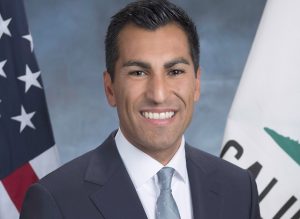Time for a New Alliance on Healthy Food and Agriculture
April 6, 2010 Michael R. DimockThe Agriculture Committee of the US Senate has taken a first big step forward toward President Obama’s call for improved child nutrition by requesting an additional $450 million per year to fund better school lunch. Those seeking a healthy food and agriculture across the nation applaud the Committee’s approval of the Healthy Hunger-Free Kids Act of 2010, though more will be needed to improve the healthfulness of the food served in our lunchrooms. At the same time, it took one big step backwards by suggesting that over $4 billion dollars needed to fund that Act should be taken out of two existing Farm Bill programs.
The Committee wants to rob Peter to pay Paul and few people seeking healthy food and agriculture have cried foul. This is a mistake. It is the reason why two weeks ago Roots of Change launched an online petition to the House leadership that could stop such a move. We are encouraged by the announcement last week by Colin Peterson, Chairman of the House Ag Committee, that he will protect those Farm Bill programs with backing from many House members. But the fight is not over.
Creating better health in this nation requires a holistic approach. We need to work at the farm and ranch level as well as on the distribution and food manufacturing systems. Piece meal approaches will not cut the mustard.
The Senate Committee proposes to cut the Environmental Quality Improvement Program (EQIP). This provides farmers and ranchers with matching funds to do work on their lands to protect environmental quality. Funded projects help to maintain clean water, free of pollutants. Some critics of industrial meat operations complain that factory hog farms use EQIP funds. This is true. But small and mid-sized family farmers who want to be good stewards also use these same funds. As with any fair government program, it is open to all who apply and fit the criteria. If we want to stop mega hog farming, let’s not destroy a program that has environmental benefits. It would be better to change the language in the next Farm Bill.
The Senate also seeks to cut outreach money to public and private agencies that are working in low-income communities to ensure that people know they can receive supplemental nutrition assistance in the form of an electronic balance transfer (EBT) card to help them purchase food, the modern version of food stamps. As a result of the Great Recession, hunger in America is worse. Almost half the people eligible to receive an EBT card don’t know it. In California, the food and farming sector losses nearly $4 billion per year because eligible people don’t have cards. This huge revenue loss could be fixed with better outreach.
So the Senate proposal will make farms less environmentally sound and contribute to hunger in America. Clearly the Senate Agriculture Committee did not consider a holistic approach to the people’s health.
My real concern is that those who seek a healthy food and agriculture have once again split over the funding of good policy. Many of those who want the money to improve school food are afraid to speak up about the cuts because funds will not be found. Let’s not let fear lead to bad decisions.
There has never been a more opportune time to stand firm and seek real solutions to complex problems. The evidence is overwhelming that change is needed and the conditions are right for making that change. Along with the President and First Lady, the US departments of Agriculture and Health and Human Services have good leadership that understands the links between farms, food and human health. The good food movement across the nation is growing larger and more influential every day. There are even signs, despite angry rhetoric regarding change, that many conventional agricultural leaders are beginning to see opportunities to improve the plight of farmers and ranchers by aligning on key issues with the good food movement.
Now is the moment to cut a Gordian knot that has long existed and impeded the move to a healthier nation. For over a decade there has been an alliance between those who seek to increase the supply of food to the hungry and the agro-industrial complex (mega food manufactures and factory farms). They have joined hands to shape the Farm Bill and other food legislation. As long as more food was made available to feeding programs, the food access advocates would accept the agro-industrial complex’s efforts to limit needed change. The links between healthy farms and healthier food, and healthy food and healthier people were downplayed. We know this because the food banks increasingly received highly processed food laden with fat, sugar and salt. This dynamic contributed to much higher rates of obesity, diabetes and heart disease for low-income people who receive this food.
To their great credit, many food bank leaders are now focusing on real nutrition rather than calories by increasing delivery of fresh, whole food. This is better for the recipients of food assistance and for the farmers. It also indicates a potential shift in a power alliance that has shaped farm and food policy.
It is my hope that moving forward toward passage of the Healthy, Hunger-Free Kids Act we will get full funding, but the money will come from sources other than the Farm Bill. I propose that we take 1% of the $531 billion base 2010 Department of Defense budget. The rationale is that obese kids today will not make healthy members of the armed forces tomorrow. The US Department of Defense is a stakeholder in the nutrition programs of this nation.
To get it done, the Congress needs to see unity among those seeking a healthy food and agriculture. The food access, nutrition, healthcare, organic, environmental and sustainable agriculture advocates and their public supporters need to come together and demand a holistic strategy underpinning the nation’s food and agriculture policy. All the ducks are in a row. So let’s act. Helping Roots of Change with its campaign is one way.



